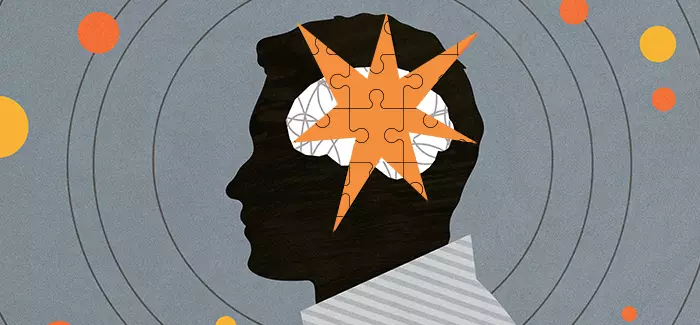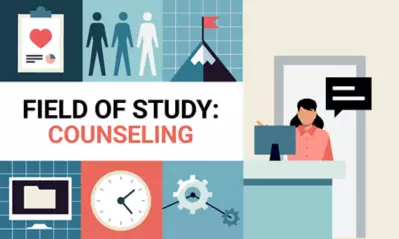Articles > Counseling >¬ÝWhat is behavioral science?
What is behavioral science?

Written by Dillon Price

Reviewed by Christina Neider, EdD, Associate Provost of Colleges

Policies, improved education and better health outcomes don’t just emerge from guesswork. They require (among other things) an understanding of why people act the way they do. That’s where the study of behavior and its impact on society comes in. Behavioral science provides the academic lens to study these patterns, bridging theory with real-world application.
An overview of behavioral science
Behavioral science is an interdisciplinary field that seeks to understand how people behave. It examines emotional and cognitive functioning, social dynamics, motivation, decision-making, and brain-behavior connections.
Research and statistics provide key tools and connections for this research to reinforce its scientific foundation. Researchers study the evolution of brain behavior while also looking ahead to anticipate shifts in politics, economics and technology.
From its beginning, the field has brought together several disciplines that developed into their own departments and professional associations. These core areas include anthropology, economics, political science, psychology and sociology. Over time, the scope expanded to include linguistics and geography, while history became recognized as a social science in both subject matter and method.
Today, this field helps shape research in business, education, law, psychiatry and newer disciplines such as artificial intelligence, child development and cognitive science.
What are the key concepts and theories of this field?
Behavioral science covers a broad range of concepts and research traditions.
In perception and sensory processing, researchers use neural models and simulations to study how the brain interprets shifting inputs, such as recognizing objects in dim light or following speech in a noisy room. In the study of memory and learning, scientists combine behavioral, neurobiological and computational methods to examine how memories are formed, organized, retrieved and sometimes reshaped.
In cognition and language research, this field measures intelligence to investigate how humans, animals and even machines process information through categorization, imagery, decision-making and language acquisition. Likewise, research into motivation and emotion examines why desires change, which emotions may be universal and how physiology, neural systems and culture together shape emotional regulation.
Beyond the individual, this field focuses on how peer influence and group dynamics shape behavior, and how institutions and cultures evolve. Additionally, researchers study how limited information and cognitive constraints shape choices that ripple outward to influence markets, politics, incentives and voting.
How does this field differ from other behavioral studies?
This field lies under the larger umbrella of social sciences. It shares common ground with other behavioral sciences such as psychological science. However, certain distinctions set it apart from other related fields.
While social science focuses on human behavior and takes a broad view of societies and their structures, this field narrows its attention to the patterns of individual and group behavior. It applies testable theories to reveal why people act the way they do within those larger social contexts.
Psychological science studies brain function, behavior and environmental factors. However, the scope of behavioral research is much wider and includes cultural, economic and institutional aspects of human behavior.
While this field differs from others, it doesn’t operate in isolation. It actively collaborates with cognitive science, business, law, education, psychiatry, demography and other related disciplines.
What is the scope of behavioral science?
This field spans five key areas of study that cover psychology, sociology, anthropology, economics and political science, including:
- Behavior, mind and brain: This area investigates how individuals perceive and process sensory information, form memories, learn, and use cognition and language. Scientists study the brain’s processing to generate behavior and even simulate those processes on computers.
- Motivational and social contexts: This area examines emotions, motivational states, links between behavior and health, causes of violent crime and the nature of social interaction.
- Choice and allocation: This area focuses on how individuals and groups make decisions, how resources or rewards are distributed and how political science and economics relate to social psychology.
- Institutions and cultures: This area studies large-scale structures such as families, religions and nations, along with human evolution, demography and modernization processes.
- Data collection, representation and analysis: This area focuses on how researchers gather and interpret data, using methods such as experiments, surveys, longitudinal studies, ethnography and comparative historical analysis.¬Ý
What role does data collection and analysis play in this field?
Research in this field depends on rigorous data collection methods to gather, represent and interpret information. Scientists use scientific models as maps to make sense of human behavior and social patterns. These models help show how income, education, personal choices and other factors connect with one another, and whether those connections are strong, weak or just random.
These data collection and analysis designs include:
- Experimental designs: Studies are conducted in labs and in the field. They manipulate certain variables while controlling others, and they use randomization to establish cause-and-effect.
- Survey designs: Surveys are built on censuses, sample surveys and longitudinal panels, and they capture representative data from populations. They reveal trends in income, health or public opinion and allow researchers to track changes over time.
- Comparative designs: Studies analyze existing records or historical events across different times or places. Researchers compare societies, policies or institutions to discover broad patterns and differences.
- Ethnographic designs: Studies rely on participant observation and interviews. Researchers delve into communities to reveal cultural norms, beliefs and practices from within.
Emerging trends and future directions of the study of behavior
Insights into human growth, comparisons with machines about how information is processed and discoveries of traits shared with animals have all advanced the study of connections between behavior, the mind and the brain. These advances reveal how:
- Humans achieve remarkable visual and auditory discrimination compared to machines (e.g., the ability to discern depth and motion, organize auditory inputs and so on)
- Memories are formed and retrieved
- Knowledge and reasoning emerge from infancy
- Language is acquired and tied to genetics, brain function and culture, with technology now extending to machine recognition and production of language
The next decade could see major advances in data collection, integration and analysis. That includes artificial intelligence (AI) and machine learning to enhance data mining, support causal inference and design adaptive interventions.
This field could also see improved accuracy due to the integration of traditional surveys with remote sensing, digital traces and administrative records.
At the same time, future research will focus on creating innovative study designs that can generate more robust and scalable evidence for multifaceted social challenges. Advances in AI-human interaction and sensor-based technologies could expand experimental possibilities, while also demanding ethical safeguards and transparency.¬Ý
What is the history of behavioral science?
Until about a century ago, ideas about the mind were largely speculative because mental life was considered beyond systematic study. This began to change in the late 19th century when experimental and observational methods were introduced to investigate brain activity and human behavior.
The term “behavioral sciences” became popular in the United States during the mid‑20th century, but support for behavioral research has fluctuated over time. Prior to the 1960s, research primarily occurred in private foundations and universities. That includes World War II research to help manage the economy, train soldiers, analyze the enemy and plan postwar transitions.
By the early 1960s, the federal government expanded its role by funding both basic and applied research, but this support began to shrink in the 1970s, and this field received a smaller share of the research budget even as other sciences grew.
Today, funding in the United States is decentralized across many agencies and departments, and other countries invest a larger proportion of resources in these fields. Researchers remain spread across distinct disciplines, yet cross‚Äëdisciplinary collaboration continues to be a key aspect of the field.
What are the applications of behavioral science?
Applied behavioral science helps inform public policy, guide business practices and affect consumer choices.
For example, policy‚Äëoriented research has produced strategies for controlling medical costs as well as understanding criminal careers and informing crime prevention and rehabilitation programs.
Research into addictive substances such as alcohol and has also impacted policy. In one study of Canadian youth, for example, raising cigarette prices reduced use and initiation. By linking consumption patterns to health outcomes and mortality, these studies inform public policies.
This field also plays a role in business practices and marketing strategies through the framework of social marketing. Businesses can use audience segmentation, message testing and media planning to influence consumer attitudes. This approach draws on psychology and sociology to potentially reduce barriers, highlight benefits and motivate voluntary participation.¬Ý
Learn more about behavioral science
Want to learn more about this field? ∆þ…´ ”∆µ offers online behavioral science degrees, including a Master of Science in Counseling/Clinical Mental Health Counseling.
You can connect with UOPX to request more details about this program and explore other online degree options.¬Ý

ABOUT THE AUTHOR
A graduate of Johns Hopkins University and its Writing Seminars program and winner of the Stephen A. Dixon Literary Prize, Michael Feder brings an eye for detail and a passion for research to every article he writes. His academic and professional background includes experience in marketing, content development, script writing and SEO. Today, he works as a multimedia specialist at ∆þ…´ ”∆µ where he covers a variety of topics ranging from healthcare to IT.

ABOUT THE REVIEWER
Christina Neider is the associate provost of colleges and former dean of the ∆þ…´ ”∆µ College of Social and Behavioral Sciences.¬ÝNeider‚Äôs career spans more than 30 years in academia, healthcare and the U.S. Air Force. She has held several academic leadership roles at ∆þ…´ ”∆µ, and she is the Vice President of membership for the Arizona Chapter of the Healthcare Information and Management Systems Society.
This article has been vetted by ∆þ…´ ”∆µ's editorial advisory committee.¬Ý
Read more about our editorial process.


